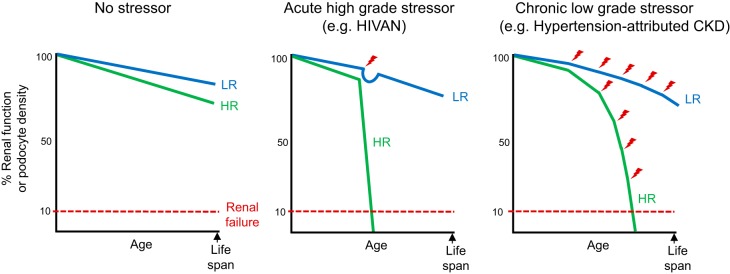Fig. 3.
Hypothetical models of renal function outcomes comparing APOL1 genotype and various stressors. Graphical representation of the known age-associated declines in renal function and podocyte density through human lifespan or age is shown. In the absence of a stressor, neither a low-risk (LR) nor high-risk (HR) APOL1 genotype is disease causing; however, a HR genotype appears to have mildly accelerated age-related losses in renal function and podocyte density. In the setting of an acute high-grade stressor, such as human immunodeficiency virus (HIV) infection in HIV-associated nephropathy (HIVAN), a LR genotype responds to the stress and is capable of recovering and returning to baseline function. The HR genotype, however, rapidly declines and is incapable of recovering from the stress, quickly reaching renal failure. In the setting of a chronic low-grade stressor, possibly representing a stress pattern associated with hypertension-attributed chronic kidney disease (CKD), the LR genotype adapts to the stresses and renal function is largely preserved. The HR genotype, however, cannot adapt to the stresses and loses renal function, resulting in renal failure within a normal lifespan.

